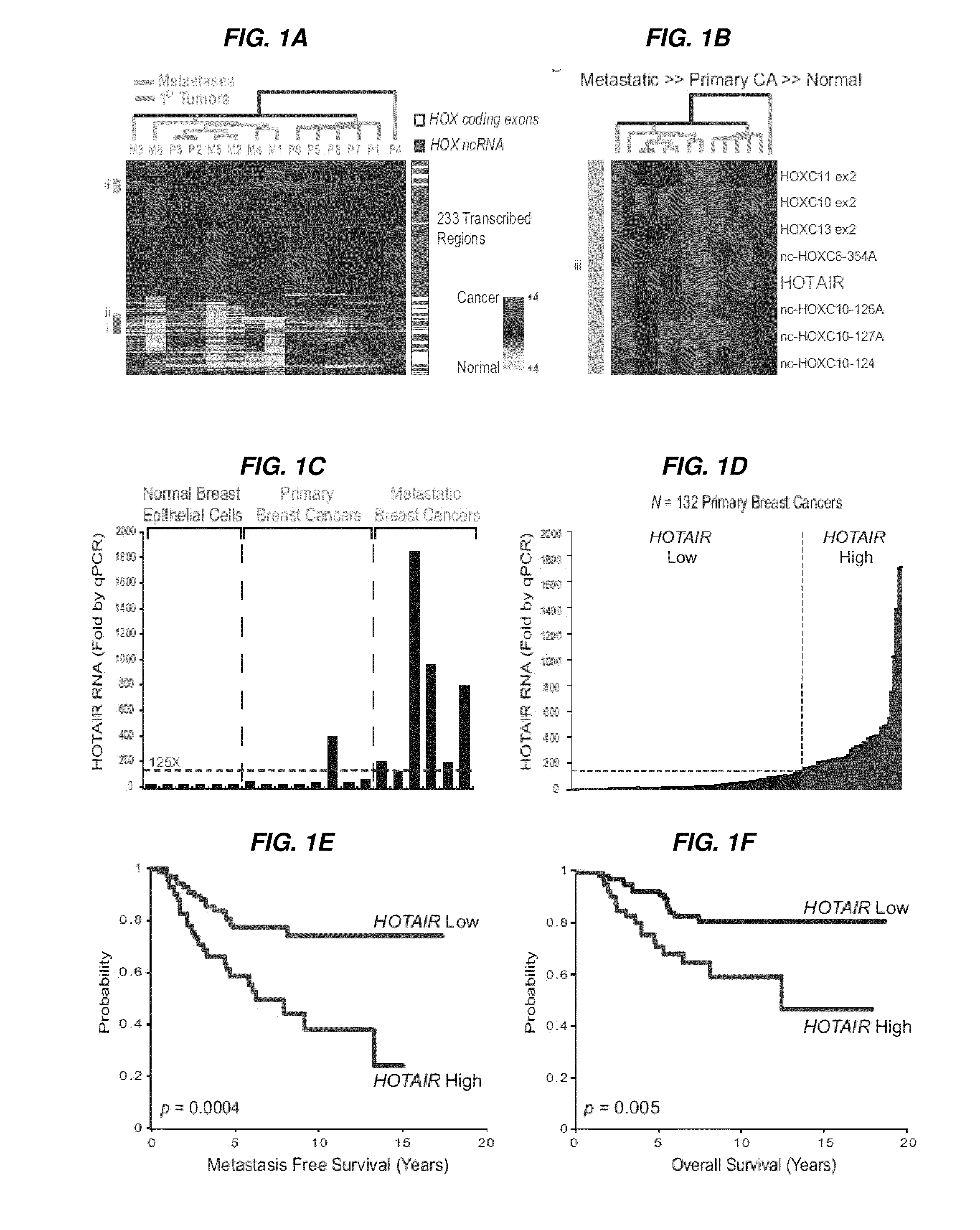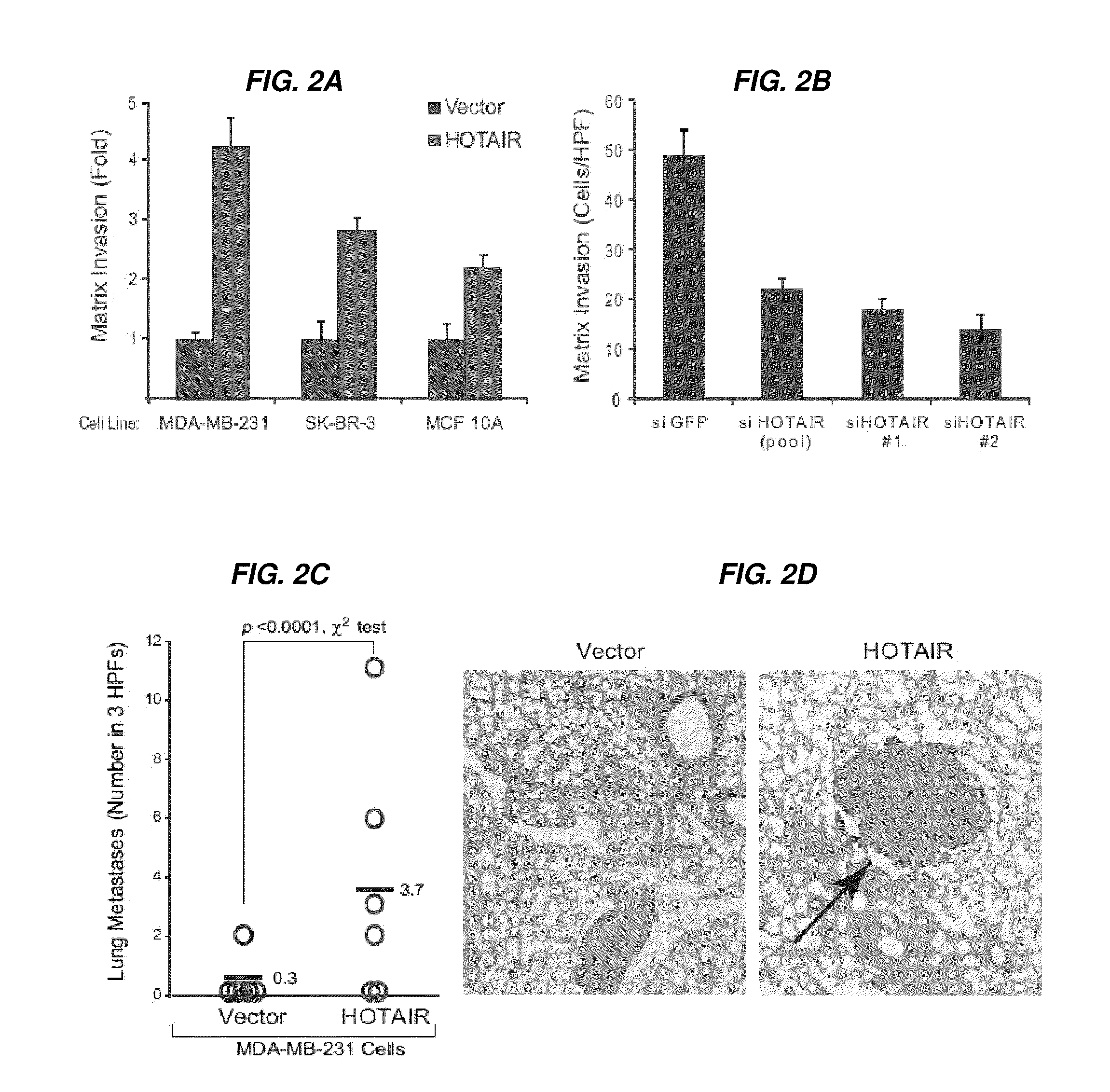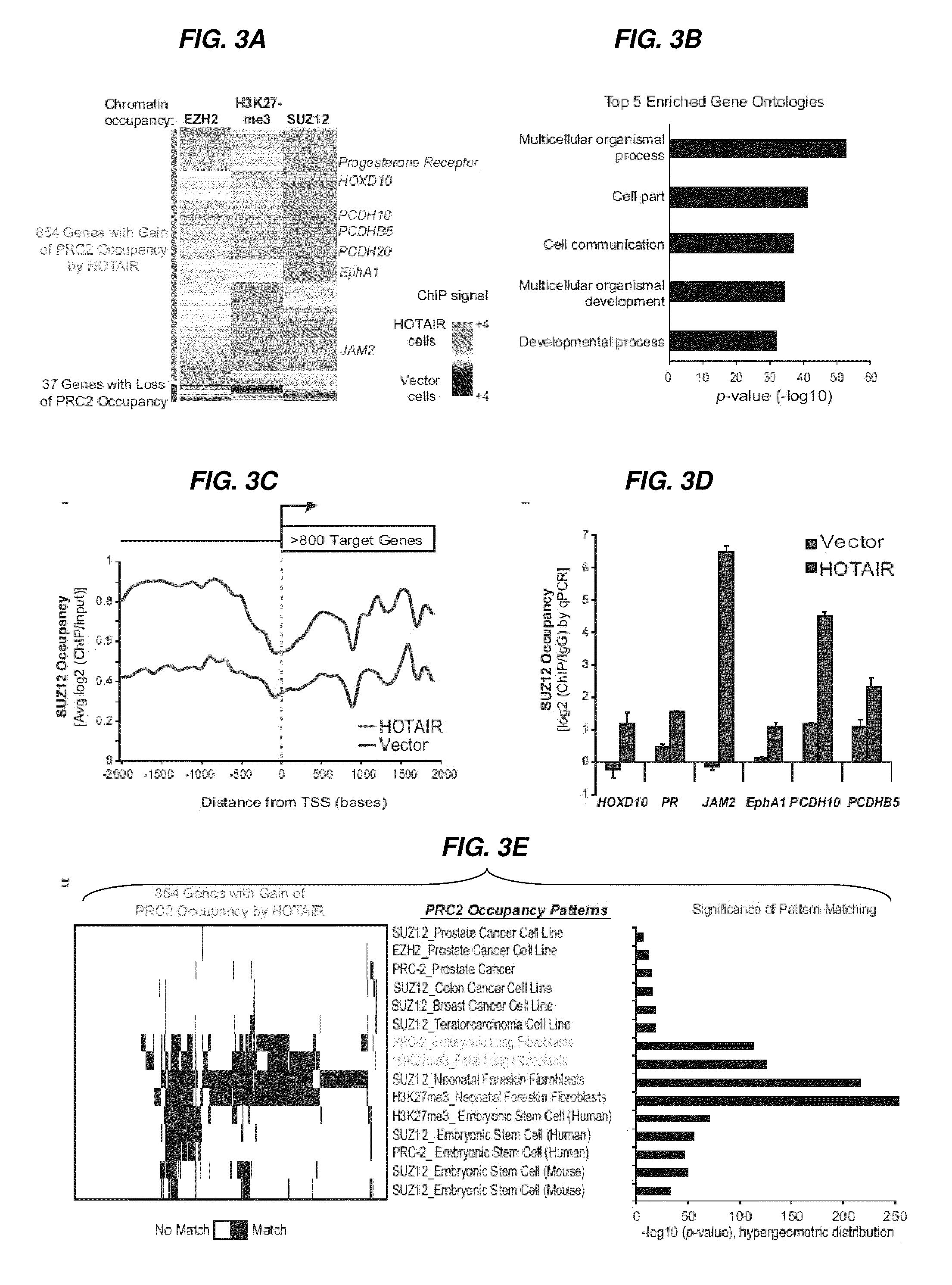Linc rnas in cancer diagnosis and treatment
a cancer and epigenome technology, applied in the field of epigenetics and cancer epigenome, can solve the problems that the epigenetic state of human cancer, such as the chromatin modification of specific genes, is difficult to measure in patient samples, and achieves the effect of facilitating detection and measurement, increasing or decreasing the expression of lincrnas
- Summary
- Abstract
- Description
- Claims
- Application Information
AI Technical Summary
Benefits of technology
Problems solved by technology
Method used
Image
Examples
example 1
In Vitro and In Vivo Examination of HOTAIR
[0266]Human materials were obtained from the frozen tumor bank and the Rapid Autopsy Program of the Department of Surgical Pathology, Johns Hopkins Hospital, and the Netherlands Cancer Institute. The expression of HOX coding and lincRNAs in human breast cancer samples was determined using a custom ultra-high density HOX tiling array. Rinn et al., 2007. HOTAIR was quantified by qRT-PCR. Survival and metastasis analysis was done using the Netherlands Cancer Institute cohort of breast cancer patients with stage I / II disease (van de Vijver et al., 2002) using standard statistical methods. HOTAIR LincRNA was introduced into cells by retroviral transduction; gene depletion was accomplished using siRNA or shRNA targeting the transcript. Matrix invasion was measured by the transwell MATRIGEL™ matrix assay. Cells were injected into the tail vein of nude mice, and lungs were analyzed histologically at 9 weeks to determine lung metastasis in vivo. Chro...
example 2
Unique Association of HOTAIR with Patient Outcome
[0267]To determine whether the expression of other HOX lincRNAs in addition to HOTAIR can predict patient outcome, the inventors measured the expression levels of 43 different HOX lincRNAs and all 39 HOX coding genes in 78 primary breast tumors from the NKI 295 breast cancer patient cohort. Results confirm the widespread dysregulation of HOX lincRNAs in breast cancer (FIG. 6). Results from our tiling array had identified a subset of genes that showed a distinct set of HOX coding genes and lincRNAs, including HOTAIR, that are variably overexpressed in primary tumors and frequently overexpressed in metastatic samples (FIG. 1b). This large data set of qRT-PCR expression of multiple HOX coding and lincRNAs was utilized to determine if other transcripts highlighted in FIG. 1b [including HOXC10, HOXC1 1, HOXC13, and nc-HOXC10-124 (shown by EST mapping to also comprise transcripts labeled nc-HOXC10-126A and nc-HOXC10-127A)] were linked to pa...
example 3
A HOTAIR-PRC-2 Gene Set Signature can Predict Patient Outcome
[0268]To determine if the 854 gene set representing promoters with an increase in PRC-2 occupancy upon HOTAIR LincRNA overexpression (FIG. 3A) can be used as a diagnostic “fingerprint” for patient outcome, the gene expression of these 854 genes was extracted from the microarray data set of all 295 primary breast tumors from the NKI 295 patient cohort. Unsupervised hierarchical clustering of these data revealed a subset of patients that showed a distinct relative down-regulation of genes from the larger gene set (FIG. 14). Patients showing this unique signature was predictive for overall survival (p=0.0003).
TABLE 4PCR primer pairs for qRT-PCRGene NameForwardReverseHOTAIRGGTAGAAAAAGCAACCACGAAGCACATAAACCTCTGTCTGTGAGTGCC(SEQ ID NO: 4)(SEQ ID NO: 5)GAPDHCCGGGAAACTGTGGCGTGATGGAGGTGGAGGAGTGGGTGTCGCTGTT(SEQ ID NO: 6)(SEQ ID NO: 7)LAMB3GCCACATTCTCTACTCGGTGACCAAGCCTGAGACCTACTGC(SEQ ID NO: 8)(SEQ ID NO: 9)SNAILTGACCTGTCTGCAAATGCTCCAG...
PUM
| Property | Measurement | Unit |
|---|---|---|
| diameter | aaaaa | aaaaa |
| diameter | aaaaa | aaaaa |
| nucleic acid | aaaaa | aaaaa |
Abstract
Description
Claims
Application Information
 Login to View More
Login to View More - R&D
- Intellectual Property
- Life Sciences
- Materials
- Tech Scout
- Unparalleled Data Quality
- Higher Quality Content
- 60% Fewer Hallucinations
Browse by: Latest US Patents, China's latest patents, Technical Efficacy Thesaurus, Application Domain, Technology Topic, Popular Technical Reports.
© 2025 PatSnap. All rights reserved.Legal|Privacy policy|Modern Slavery Act Transparency Statement|Sitemap|About US| Contact US: help@patsnap.com



